I get the look from my wife, a lot. This week, a few packages of plants ordered through the winter have been delivered. Often, I’m able to grab and plant these without witnesses, but this week was cold and windy, so I was caught in the act. When it’s revealed that packages contain plants (the first delivery arrived with dormant roots of dormant Petasites frigidus var. palmatus ‘Golden Palms’, below), the disapproving look ensues (sometimes only a disgusted shake of the head), as it will when I arrive home in a few weeks with the front seat of the car jammed full after a visit to the garden center. This winter, several larger orders have been divided into multiple, smaller deliveries, so I’m confronted by the evidence with disturbing frequency (though I’m delighted with the arrivals).
I’ve seen the look so often now that the effect has worn a bit thin, and while objections are noted, certainly these have little effect in dissuading additional compulsive purchases. This is why a Japanese maple or two becomes a collection of thirty-five trees (or more), and how several hellebores become many more dozens than I care to count. In fact, I have no interest in making a count of maples or hellebores (or anything else). Why would I provide proof of my excess?
While purchases provoke my wife’s wrath, she’s quite happy with the end result, I think. Today, there are no complaints with hellebores in full flower. Often, blooms are spaced from late January through mid-March, but the vagaries of this winter’s weather concentrated more flowers into a shorter window, which is now. I prefer the longer period of bloom, but my preference doesn’t count, and as I prowl about the garden I’m overjoyed with flowers of hellebores, pieris, and more.
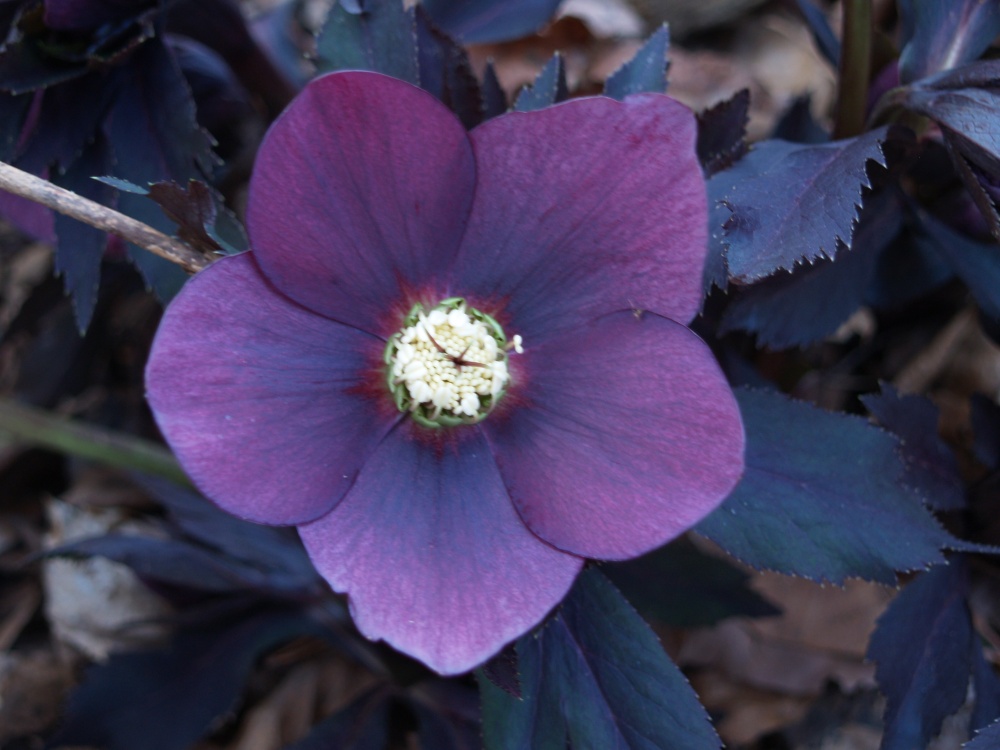

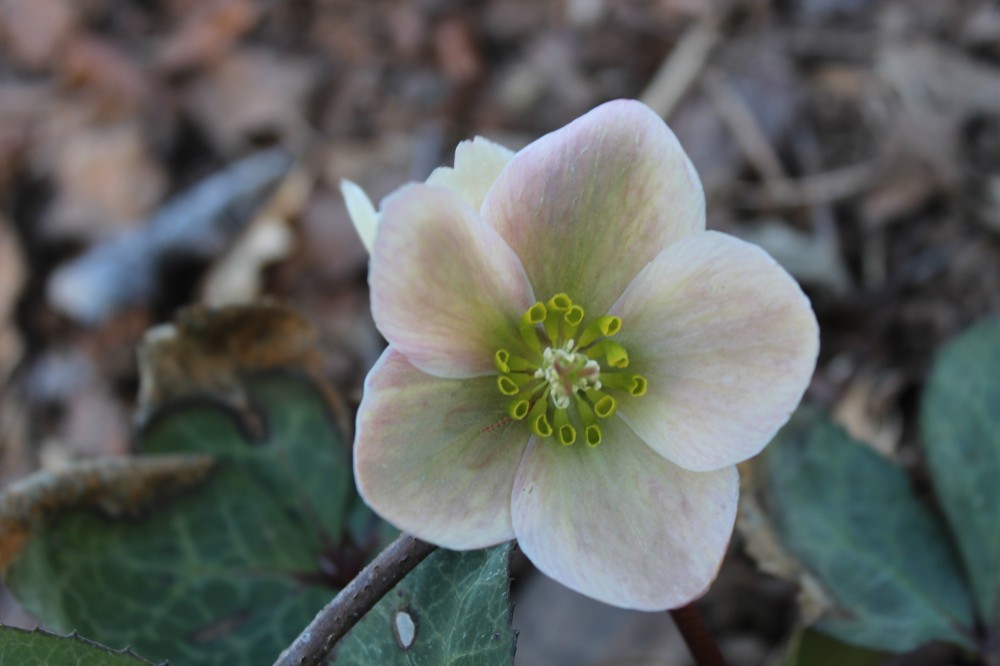
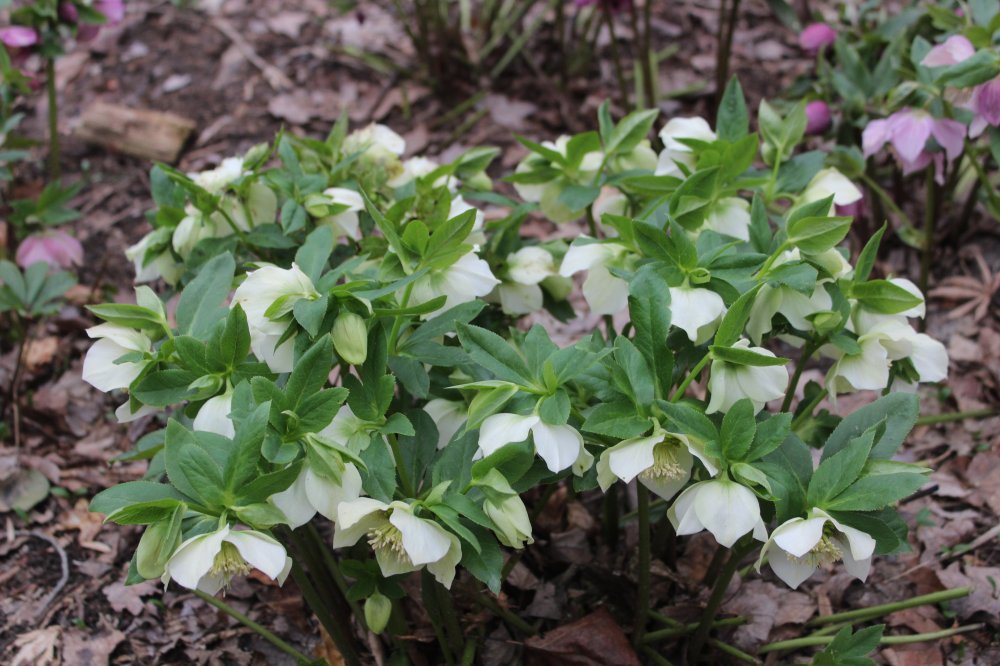
The garden’s hellebores are unevenly divided into old types, with flowers that nod downward, and newer introductions with taller flower stalks and blooms that face outward or up. These are the ones that are hard to resist, and they also are the root of my troubles. Undoubtedly, there are many more of the older types in the garden than newer, to a large extent because seedlings sprout readily, which are then encouraged to grow for a few years before they’re transplanted. But, there is confusion in numbers, and I’ve explained before that part of the reason I’ve lost track of the names of many of the garden’s hellebores is because there are far too many to keep straight. Many are purchases, hybrids and select strains, but more of the types with nodding (but still beautiful) flowers that are spread through the garden began here as seedlings. Ones pictured on this page are a fraction of unique hellebores in the garden, though many not pictured show only slight variation.
I suppose that if money was not a consideration I would prefer the fancier types, and particularly ones with double flowers or speckles, or whatever else makes one new introduction more distinctive. There are a bunch of these, which tend to be later to flower, with many just coming into bloom. But, the fancy types aren’t cheap, and many are sterile so there will never be (free) seedlings. This does, however, leave space for purchasing new introductions that catch my eye.


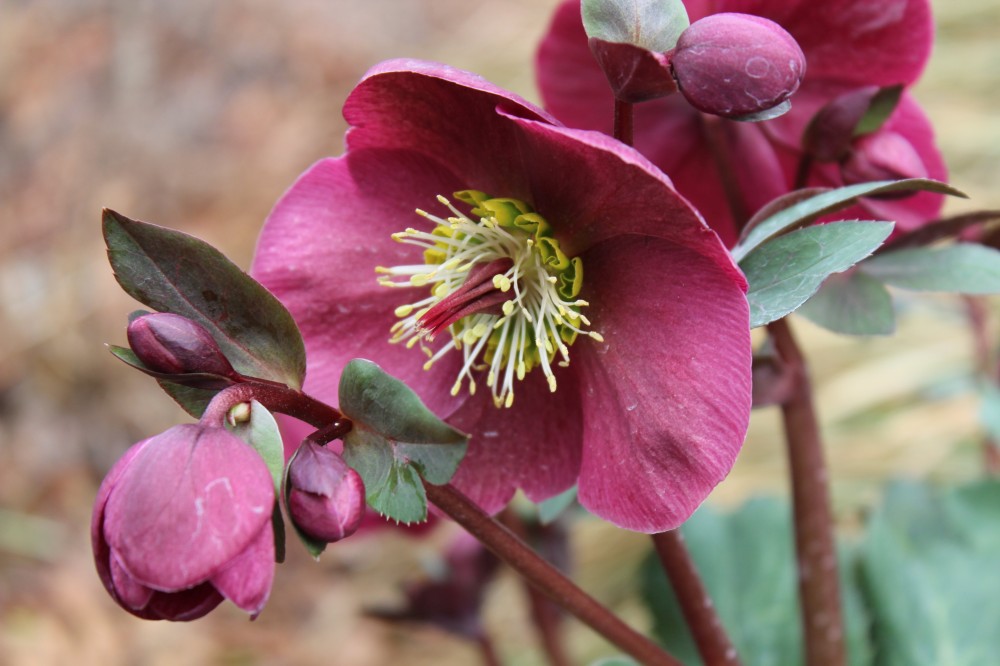
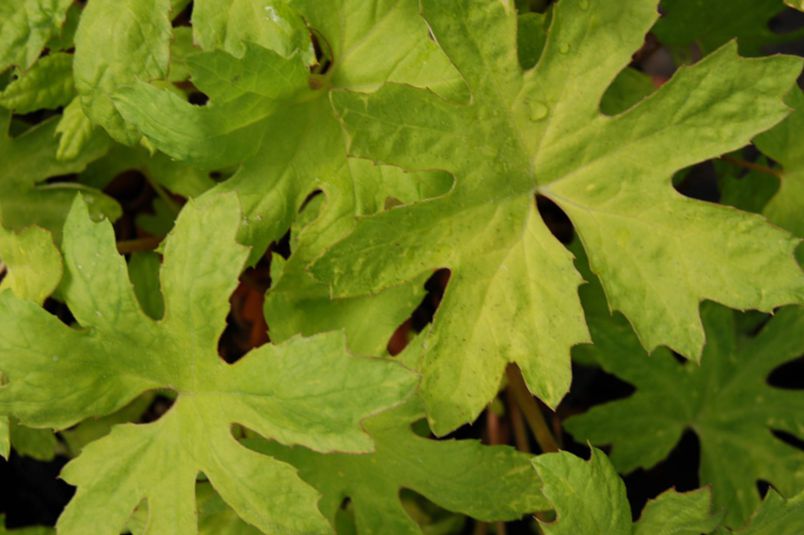

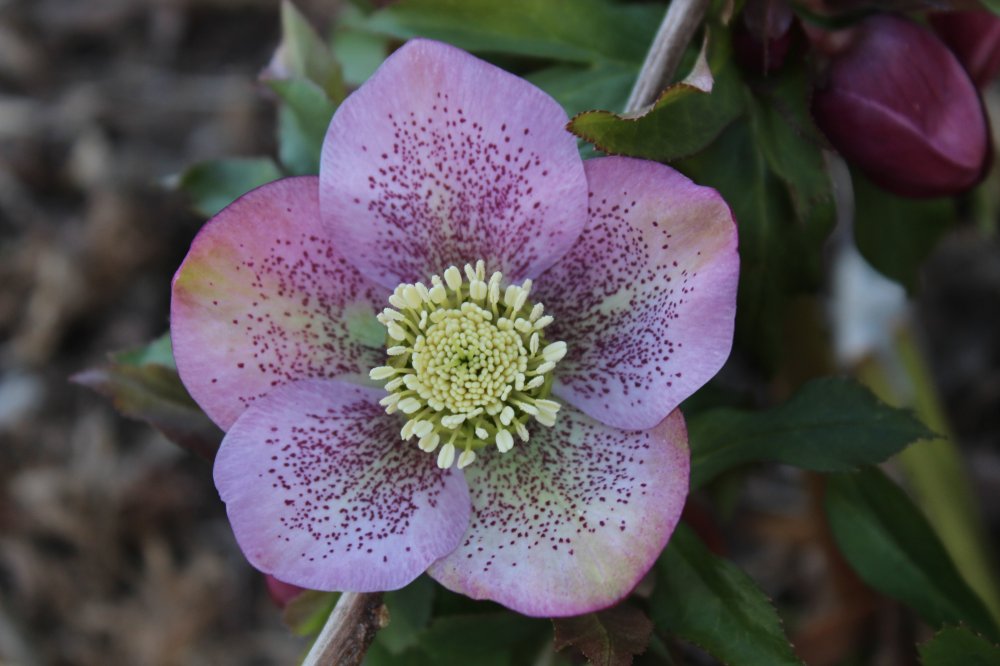
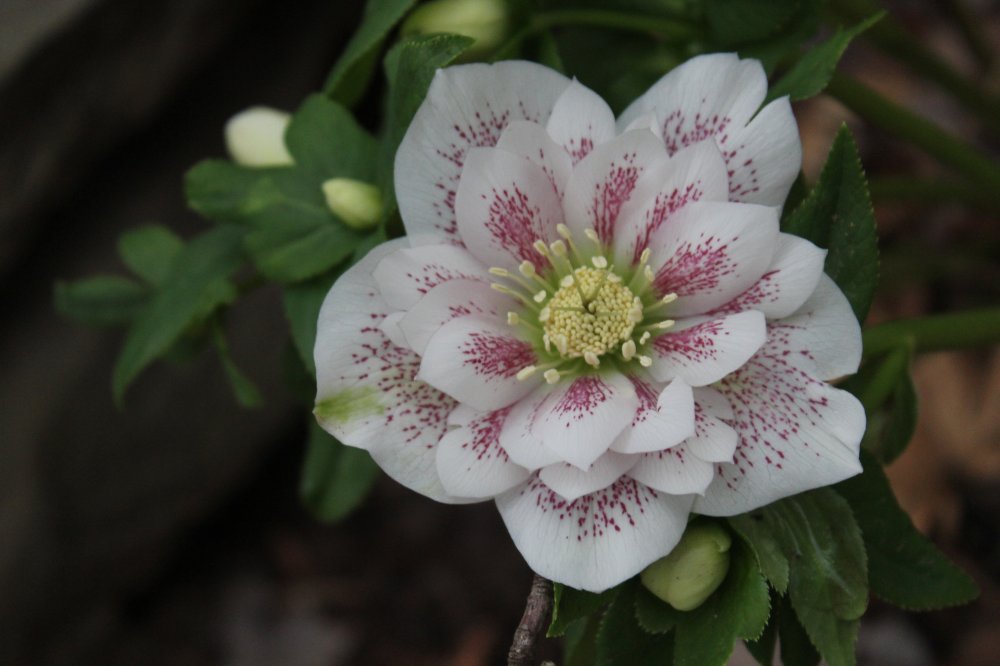
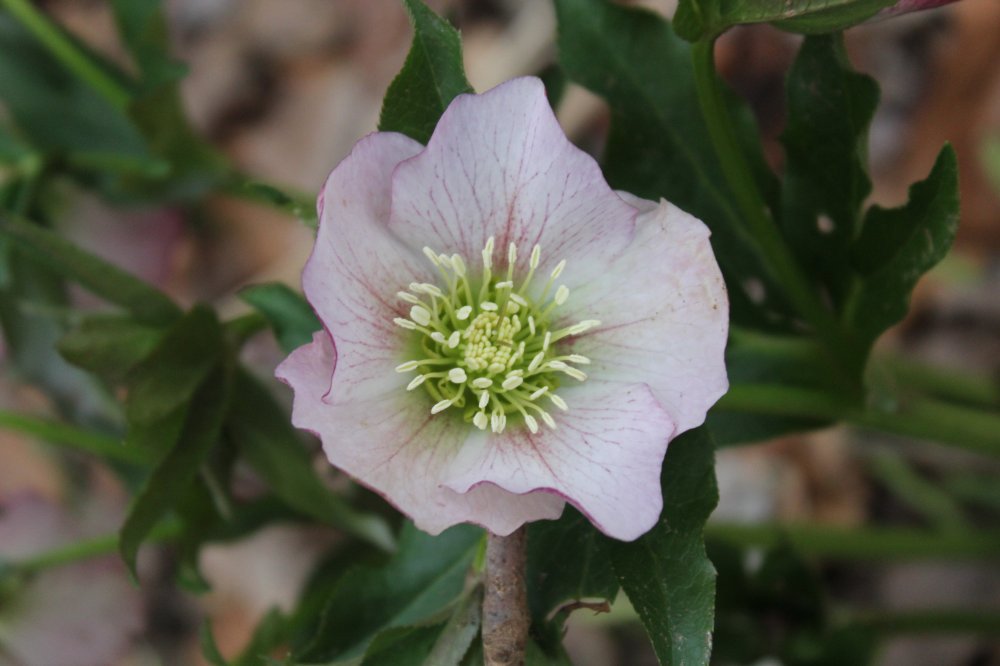

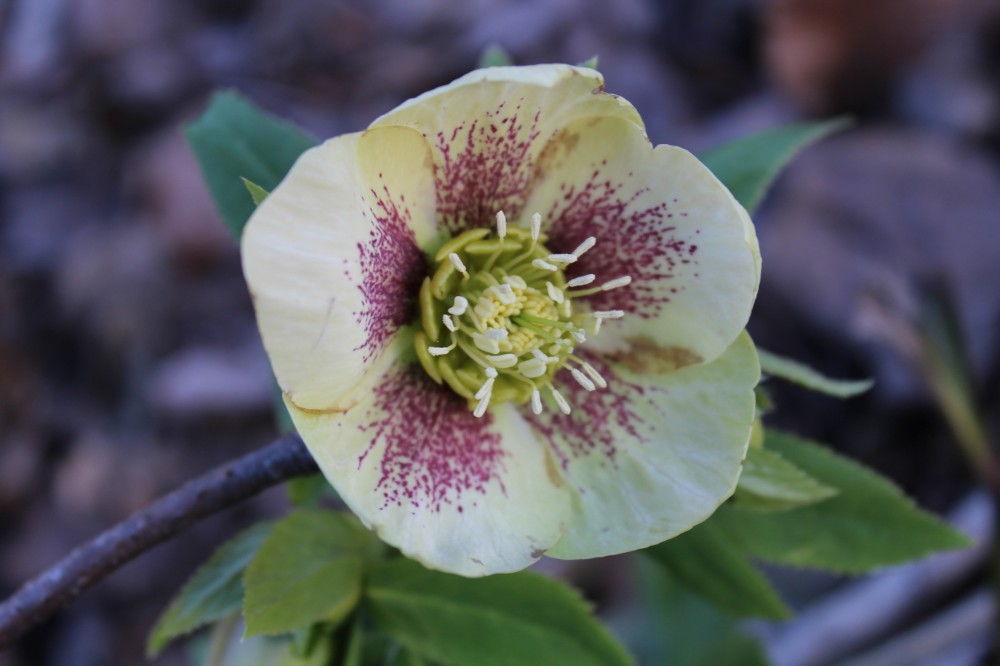
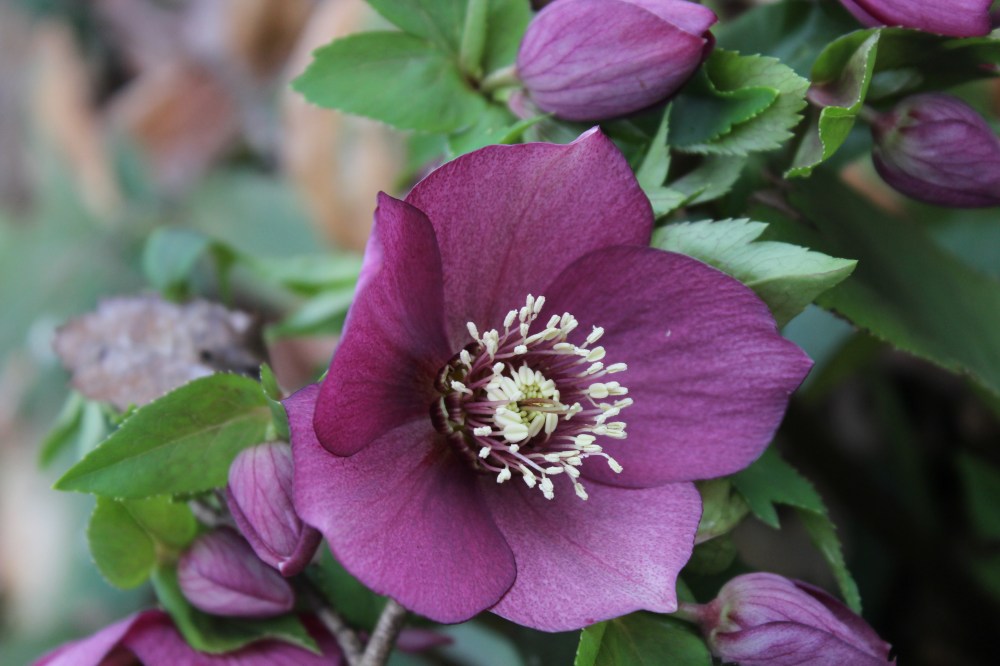


Love all your Hellebores, Dave!! I planted 3 for the first time late last summer, & are just now being rewarded by a couple of blooms on 2 of them. These were purchased online at a special sale price of 3 for $18 from Wayside Gardens. Unfortunately, although supposed to be a “mix”, two of the plants are obviously sporting deep burgundy “nodding” – as you mention – blooms that pretty much disappear into the foliage. Regardless, I do like them & am planning on adding more, different varieties.
Question: Do you have any particular online sources you prefer & trust for plants in general?
I’ve purchased a few hellebores from Pine Knot Farms, but prefer to plant larger pots with more roots from the the garden center so I can plant and ignore. For unusual perennials I purchase online from Far Reaches and Edelweiss.
Thanks!
Absolutely gorgeous blossoms! I just love those colorful double blossoms!
For the “old” varieties that face down, is there a trick in making them face up, such as for photos?
I fully sympathize with you and your wife. I, too, like to try a variety of ideas in our garden. 8 out of 10 times my wife to my new idea. The other two times she has no opinion. it can be frustrating.
We have an understanding. I provoke, she complains. I’m pretty certain it’s a game.
To photograph nodding flowers I set a twig just below the bloom.
The downward facing Helli’s are just being modest….
And they are. Perhaps if they did not flower in winter hellebores would be less valued.
I read your column with regularly and enjoy it . I too know the “look” and try to sneak plants by
I’ve lost much of my deviousness in recent years. I suspect this is good, but it provokes more looks.
I think I would be pleased with hellebores too if they looked like that. We grew them only for the nursery. I do not like them enough for my own garden. They just do not do as well here as they do in other regions. I think they are popular only because they happen to do ‘something’ in the shade and foliar litter of redwood trees. Not much grows under redwoods.
In the colder parts of the plant (not that Virginia is truly cold) we must do something to get through until spring
Beautiful Hellebores, I’m so jealous. Only two of mine came in to flower and our new whippet puppy pulled the flowers off of one of them.
Be extremely careful about that. Hellebores are extremely toxic to dogs (& cats). Consuming any parts of the plant can be fatal, & require an immediate trip to a vet asap.
Fortunately, animals are most often able to sense plants with alkaloid toxicity. Not true with children, though probably foolishly I don’t recall lecturing ours on the subject when they were of that age.
I agree that most animals – wild ones in particular – seem to have a sixth sense as to what plants to avoid, but I still wouldn’t trust a puppy (or a kitten) to have that same sense.
Dave, they are just beautiful was glad to find out newer one face up and out. I have always avoided them as my land if flat and you really can’t see them, unless you bend over and raise the stem. Now I will got some of the newer one. Your choices are beauties!n
I do much bending and lifting of blooms.